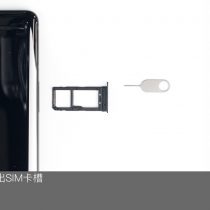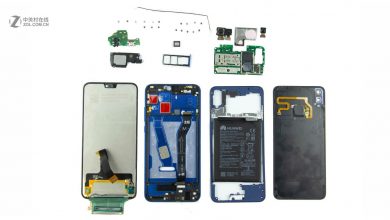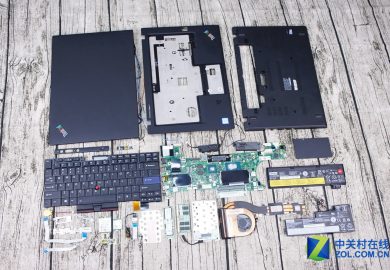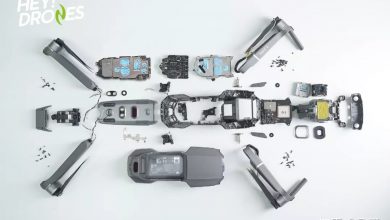Two months ago, HTC officially launched the HTC U12+. This smartphone features a 6-inch 2K super LCD, and it is powered by a Qualcomm Snapdragon 845 processor. Today, we will start the teardown of the HTC U12+ to show its internal structure.
First, remove the SIM card tray. Then, use a heater to heat up the phone’s back cover. Then, try to use a sucker to separate the back cover from the phone body. Later, use a plastic clip to widen the slot. During this step, we still need to heat up the back cover in case the glass on the back gets broken.
Take out the connector of the fingerprint reader cable with a plastic insulated pry. Now, the back cover has been successfully taken out. The fingerprint reader chip on the back is provided by GOODiX. Many people may wonder whether the internal design of the U12+ with a transparent back cover is different from that of the U12+ with a semi-transparent back cover or not. After the teardown of the black ceramic version, we find that its internal design(with a transparent back cover) is the same as the semi-transparent back cover. This version has a symmetric design and neat layout.
Except for NFC coils, there are three antenna lines with the LDS process on the cover. The black part below it is the graphite layer for heat dissipation. Several contacts are designed on the back of the plate to bridge the connection of the NFC antenna, earphone, and antenna line to the motherboard. The motherboard occupies much internal space. The connectors are mainly fixed by the plastic plate, which has just been removed. We can see that the motherboard has low integration, which leads to the phone’s low-capacity battery.
It is the front of the motherboard. Some part of the shield cover is covered by a conductive copper sheet. The top of the motherboard has lower space utilization than the lower part of the motherboard with regard to the front of the motherboard. In my opinion, the circuit design could be better. Now, the rear main cameras have been completely taken out. This dual-rear camera setup’s parameters are as follows: 12MP HTC UltraPixel fourth-generation wide angle lens, the pixel size is 1.4um, f/1.75 aperture; 16MP telephoto lens, the pixel size is 1.0um, f/2.6 aperture. The volume of the dual camera on the front is small because it doesn’t come with focus and image stabilization components. The parameters of the dual cameras on the front are as follows: 8MP, pixel size 1.12um, f/2.0 aperture.
After removing two shield covers on the front of the motherboard, we can see that the three main chips of the radio-frequency circuit are covered by thermal grease. Besides, there is an empty solder joint on the left. Two shield covers on the back of the motherboard can also be removed. The component covered by the white conductive material is the 6GB memory chip from SK Hynix, with the Qualcomm Snapdragon 845 chip piled together. The component covered by the grey conductive material is the 128GB ROM from Samsung. We can see that the front cameras are fixed by the metal support. Now, remove the screws used to fix the metal support. Then, the dual camera setup on the front can be easily removed.
After finishing the teardown on the top part, remove the bare screws at the bottom. It is the linear vibrator. Without it, the phone would bring a poorer interactive experience. This vibrator is what the Sony XZ2 features. Now, remove the loudspeaker from the phone body. It is made by AAC. On the back of the loudspeaker, many white particles in the blue part can be seen, which is AAC’s proprietary technology. This technology can improve the phone’s low-frequency performance when music is played. Undoubtedly, this smartphone will bring excellent sound quality.
Its data port meets the Type-C standard with an independent design. It is connected to the vice board at the bottom by the cable. The blue seal ring at the top of the data port can be seen. The information on the back of the loudspeaker suggests that this vibrator is also provided by AAC. Benefiting from the large volume, this linear vibrator has better performance than the rotor vibrator. The battery, made by ATL, has a capacity of 3500mAh,13.47Wh. It supports QC3.0 technology. This battery can get half-charged within 35 minutes. Now, I have finished the teardown of the smartphone. After this teardown, I found that both its components and sealing performance had reached a higher level. However, this phone fails to support wireless charging.
Summary

As a smartphone whose waterproof level reaches IP68, undoubtedly, the teardown process of the HTC U12+ is not easy. For example, removing the back cover is difficult because it is tightly fixed with double-sided adhesive. Besides, the back cover’s curved design also makes it more difficult to remove. After removing the back cover, the phone’s internal structure adopts the three-stage design. The smartphone only uses 15 screws since its components inside have high integration. With regard to the difficulty of the phone’s teardown process, we don’t recommend you tear down the phone by yourself.







My phone won’t charge anymore. I replaced the C port, and it still won’t charge. I have some priceless photos I would love to recover on this phone. Is there a way to fix my phone or a way to find the location of the phone’s internal memory and put it in a different phone so I can get those photos back?
Why don’t you try to replace a battery?
So I replace the battery and the c port. Nothing, still no power. I guess those priceless photos are gone forever. I have a new phone that pretty much is a paperweight